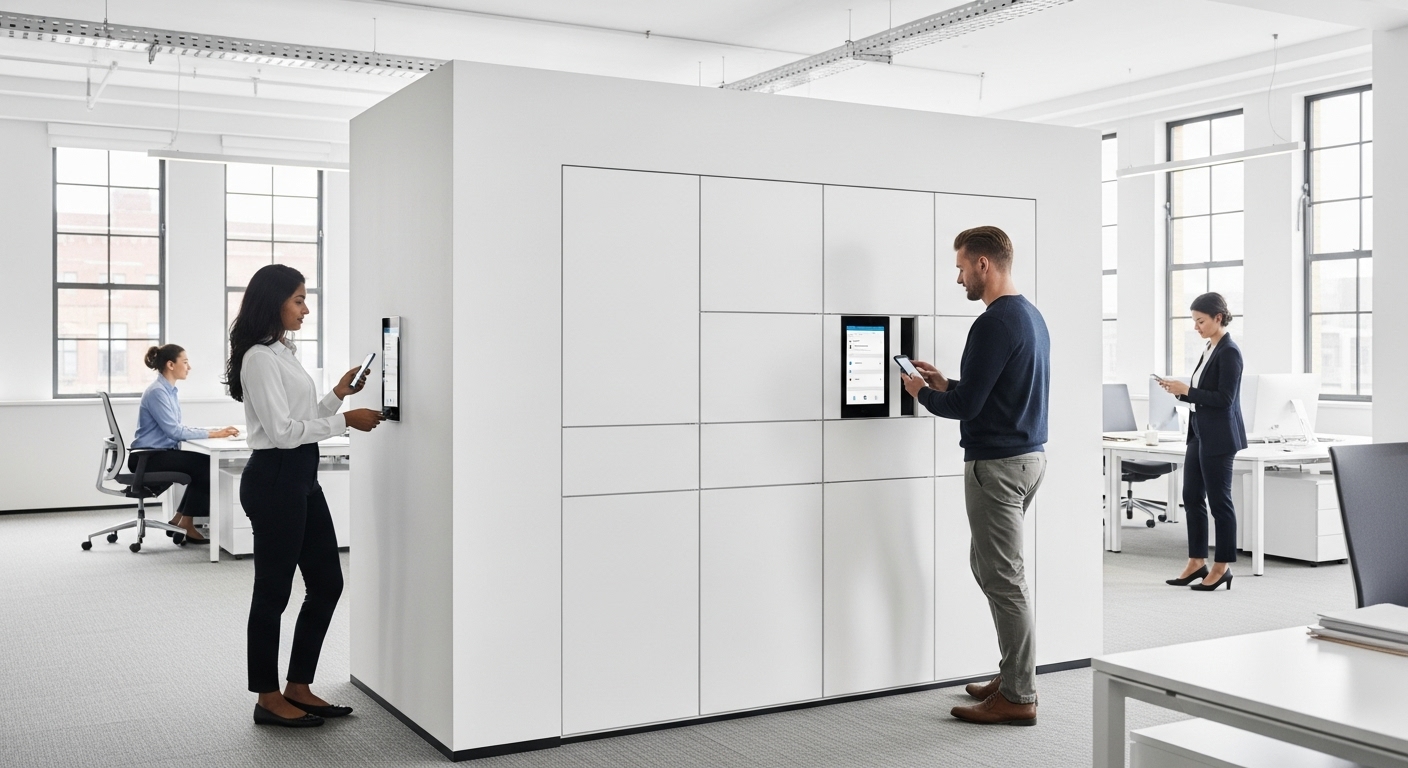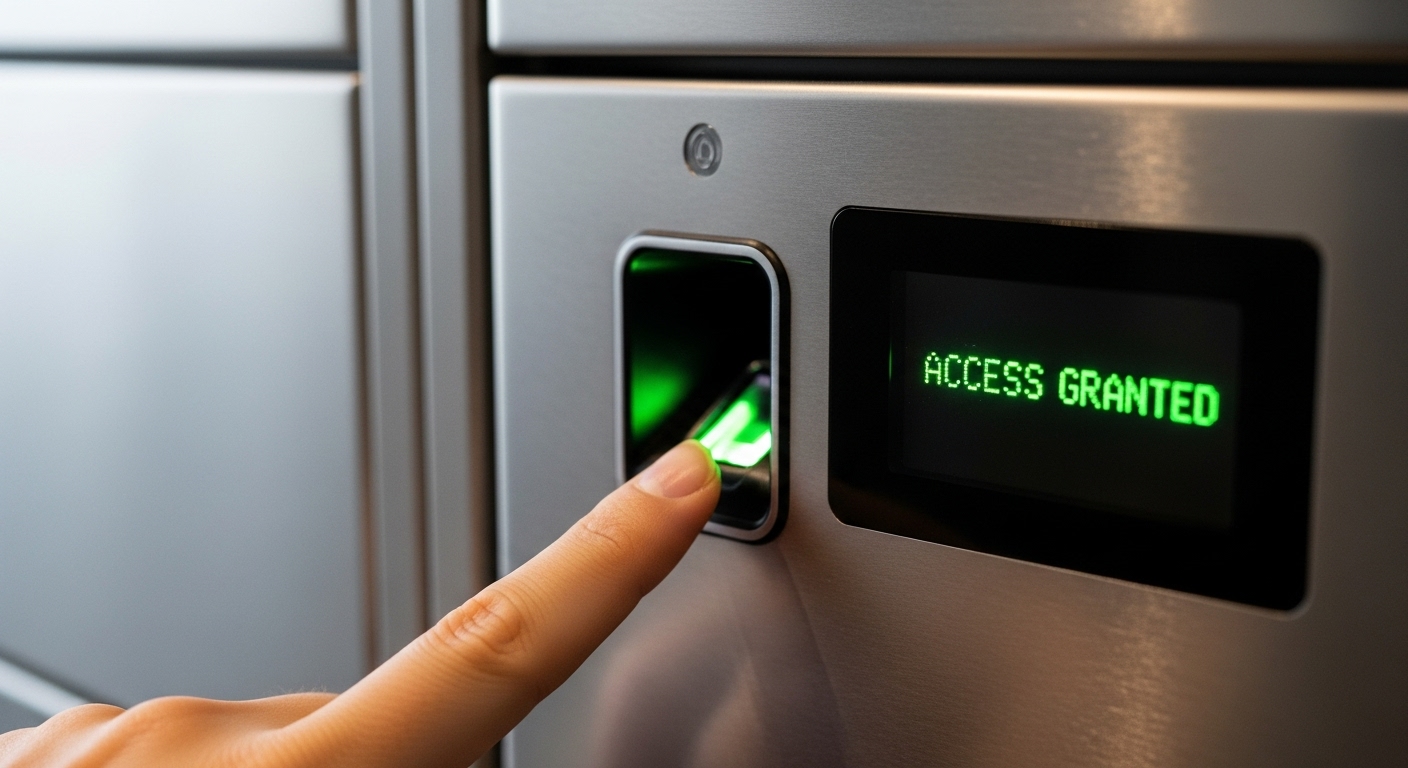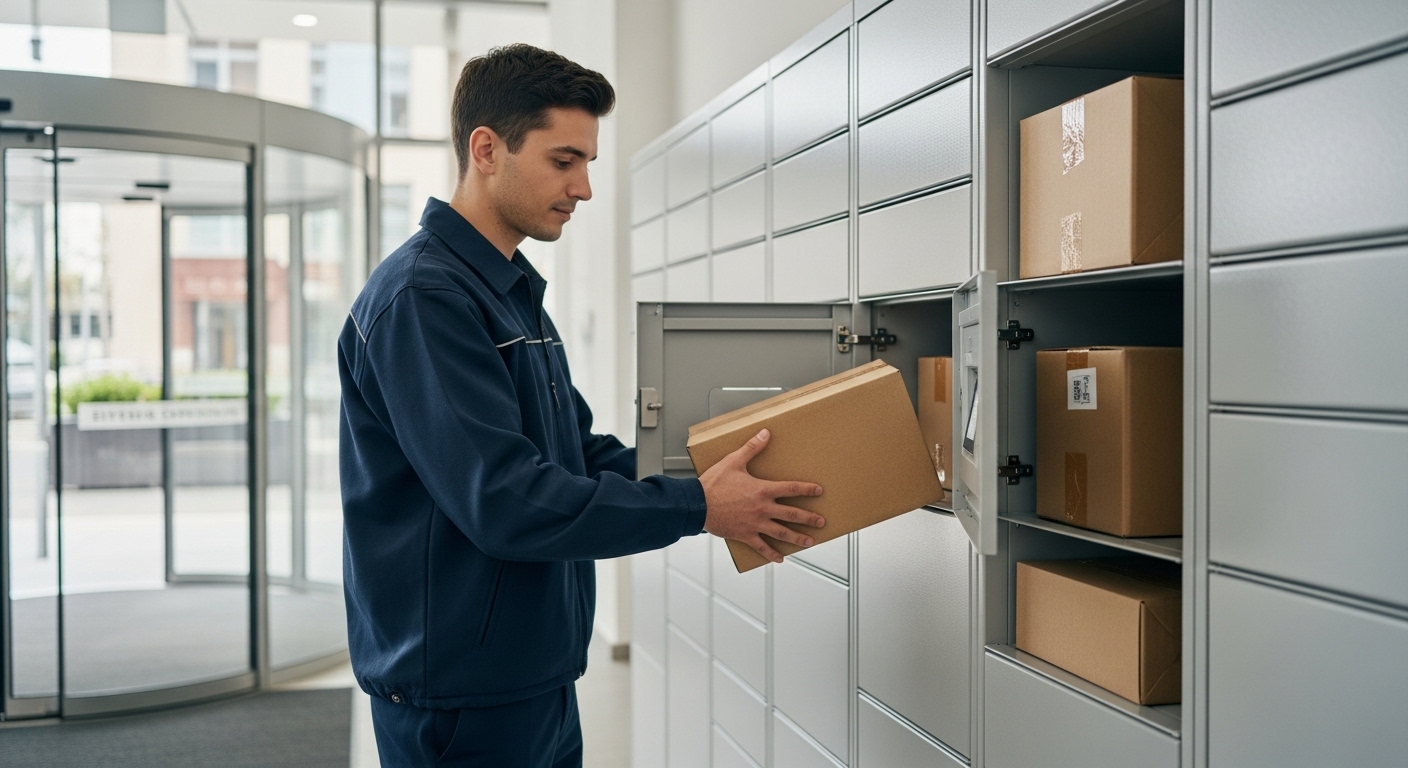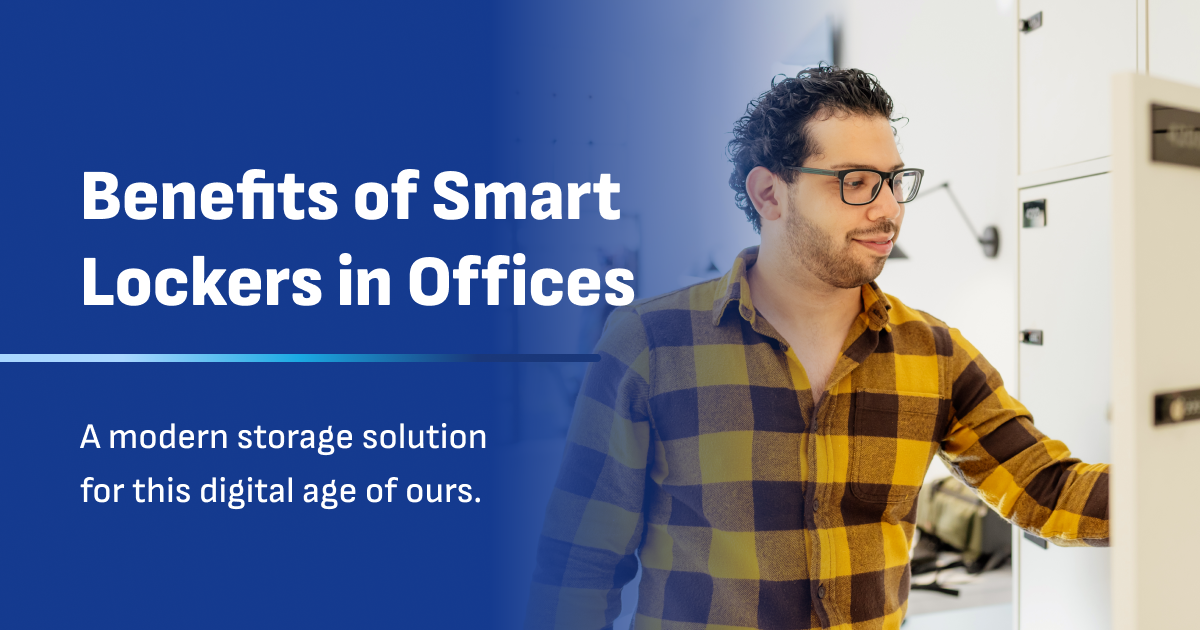The benefits of smart lockers in offices represent a modern storage solution that’s transforming how workplaces manage space, security, and employee convenience. As companies continue to evolve their physical environments to meet the demands of hybrid work models and flexible office arrangements, traditional storage methods are proving inadequate for today’s dynamic workplace needs.
Smart lockers offer an intelligent alternative that combines cutting-edge technology with practical functionality, providing employees with secure, accessible storage while giving facility managers unprecedented control and visibility over their space utilization. This innovative approach to workplace storage is quickly becoming an essential component of the modern office ecosystem.
Every innovation, this ear, is based on how much advantage man can get from that particular innovation. So, smart lockers also have those unique benefits that a traditional storage locker doesn’t have. The main area of innovation in these lockers is providing convenience with technology to the locker users.
Here are the advantages that we will discuss in the next five minutes:
- Convenience and Accessibility
- Enhanced Security
- Efficient Package Management
- Improved Space Utilization
- Reduced Operational Costs
- Contactless and Hygienic Solution
- Sustainability
- Customization and Personalization
- Scalability for Growing Needs
In this blog, I will tell the benefits of smart lockers, which truly change how we think about storage solutions.
1. Convenience and Accessibility

Convenience is the utmost priority in smart lockers, and that’s what the manufacturer focuses on. Authenticated users can access these lockers 24/7, only if the administrator allows it. All you need is a mobile phone, RFID cards, or PIN codes to have access.
2. Enhanced Security

Old conventional lockers have the risk of lost keys or easily tampered locks. While smart lockers have keyless entry with digital access logs, biometric authentication, or remote-controlled mobile apps. Moreover, only authenticated users can access these lockers, ensuring top-notch security.
3. Efficient Package Management

E-commerce business owners can directly place their orders in the lockers, and delivery persons can directly access these lockers whenever they want to pick them up.
Also, when it comes to delivering those parcels to different apartments, offices, and other public place places, the users can easily access those lockers when they are free without waiting for the delivery person.
4. Improved Space Utilization

Smart lockers can be ordered in different variants like sizes, types, and security features you need. Also, these lockers can be made in modular designs so that you can fit these lockers anywhere you want.
This flexibility can enhance the utilization of space, especially in public places. Also, in modular designs, if you remove any compartment, it doesn’t affect the overall functionality of the locker.
5. Reduced Operational Costs
As you know, these lockers are fully automated, and you can reduce the labor cost of managing keys, sorting deliveries, and supervising old conventional lockers. There is no need for extra staff, and these lockers can take care of everything on their own.
All you need is to invest only the first time, and you are all set to cut short your worries. Saving costs from lost or stolen items from storage is another benefit for organizations.
6. Contactless and Hygienic Solution
In the post-pandemic world, hygiene became a top priority. These lockers are a contactless storage solution that minimizes human touch.
This reduces the risk of germ transmission, by accessing lockers via smartphones or touchless methods. This is beneficial for enhancing hygiene in public spaces like gyms, offices, and co-working spaces.
7. Sustainability
The smart lockers are a sustainable solution due to the sensors. These sensors can sense the item stored in it, and they reduce the received receipts used.
Moreover, these lockers use less energy than handling a conventional locker. You will need a separate counter and a staff to manage it.
8. Customization and Personalization
In software, you can customize limited-time access, multi-user access, and integration with existing corporate systems like employee card access. The administrator can also customize these lockers for sizes and personal belongings.
9. Scalability for Growing Needs
As your business grows, so do your storage needs. To meet your growing storage needs, you have to extend your storage lockers. The smart lockers can easily expand by connecting two lockers at once or adding more compartments to the first one.
Types of Smart Lockers for Modern Office Storage Solutions
Smart lockers come in various configurations to meet different office requirements. Standard personal storage lockers are ideal for employees to store personal belongings, laptops, and documents. Parcel delivery lockers are specifically designed for package management with varying compartment sizes to accommodate different package dimensions. Temperature-controlled lockers serve specialized needs for storing medications, food items, or sensitive electronic equipment.
Outdoor smart lockers provide weather-resistant solutions for external installations, while indoor units focus on aesthetic integration with office interiors. Some organizations opt for hybrid systems that combine personal storage with package management capabilities, maximizing functionality while minimizing space requirements. These benefits of smart lockers in offices make them an essential modern storage solution for today’s workplaces.
Technology Behind Smart Lockers in Offices
The core technology of smart lockers relies on IoT connectivity, cloud-based management systems, and various authentication methods. Most systems use cellular, Wi-Fi, or Ethernet connections to communicate with central management platforms. The hardware typically includes electronic locks, sensors for occupancy detection, LED indicators for status display, and sometimes cameras for additional security.
Authentication technologies range from simple PIN codes to advanced biometric systems including fingerprint scanners, facial recognition, and iris scanning. RFID and NFC technologies enable seamless access using employee badges or smartphones. The software platform manages user permissions, generates usage reports, handles notifications, and integrates with existing office systems like Active Directory or HR management platforms, making smart lockers a comprehensive modern storage solution.
Return on Investment Analysis for Office Smart Locker Systems
Organizations typically see ROI within 12-18 months of smart locker implementation. The primary cost savings come from reduced administrative overhead, eliminated key replacement costs, decreased security incidents, and improved operational efficiency. Labor cost savings are particularly significant, as traditional locker management requires dedicated staff time for key distribution, maintenance, and problem resolution.
Additional financial benefits include reduced insurance premiums due to improved security, decreased liability from lost packages, and potential revenue generation through locker rental fees in some business models. The initial investment typically ranges from $200-800 per locker unit, depending on features and complexity, with ongoing operational costs being minimal due to the automated nature of the systems. These benefits of smart lockers in offices demonstrate clear financial advantages for modern storage solutions.
Integration of Smart Lockers with Office Ecosystems
Modern smart lockers integrate seamlessly with existing office infrastructure. They can connect to building management systems to optimize energy usage and coordinate with security systems for enhanced access control. Integration with employee databases allows automatic user provisioning and de-provisioning, while connection to calendar systems can enable automatic locker reservations based on employee schedules.
Many smart locker systems offer APIs for custom integrations with proprietary office applications. This includes connection to visitor management systems for temporary access, integration with hot-desking platforms for complete workspace management, and linkage with inventory management systems for equipment tracking and distribution.
Best Practices for Implementing Smart Lockers in Office Environments
Successful smart locker implementation requires careful planning and stakeholder engagement. Organizations should begin with a thorough assessment of current storage needs, user patterns, and existing infrastructure. Pilot programs in specific departments or buildings can help identify potential issues and user preferences before full deployment.
Change management is crucial for adoption success. This includes comprehensive user training, clear communication about benefits and procedures, and ongoing support during the transition period. IT departments should be involved early in the planning process to ensure proper network infrastructure and security protocols are in place.
Location selection is critical for maximizing usage and convenience. High-traffic areas with good cellular or Wi-Fi coverage are ideal, while considering security requirements and accessibility compliance. Power requirements should be assessed, with some locations requiring electrical upgrades to support the locker systems. These implementation strategies maximize the benefits of smart lockers in offices as a modern storage solution.
Maintenance and Support for Office Smart Locker Systems
Smart lockers require minimal maintenance compared to traditional systems, but preventive care ensures optimal performance. Regular software updates maintain security and add new features, while hardware maintenance typically involves cleaning sensors, checking electronic components, and replacing batteries in battery-operated units.
Most vendors provide remote monitoring capabilities that alert administrators to potential issues before they affect users. This includes low battery warnings, connectivity problems, and hardware malfunctions. Service level agreements should specify response times for technical support and maintenance visits.
Organizations should establish clear procedures for handling system failures, including backup access methods and communication protocols for affected users. Regular testing of backup systems and emergency procedures ensures continuity of operations during maintenance or unexpected downtime.
Selecting the Right Smart Locker Provider for Your Office
Selecting the appropriate smart locker vendor requires evaluation of multiple factors beyond initial cost. Key considerations include the vendor’s track record in similar installations, available features and customization options, integration capabilities with existing systems, and long-term support commitments.
Technical specifications should be carefully reviewed, including security certifications, connectivity options, power requirements, and environmental ratings. The vendor’s software platform capabilities, including reporting features, user management tools, and mobile applications, significantly impact the user experience and administrative efficiency.
Financial considerations extend beyond purchase price to include installation costs, ongoing support fees, software licensing, and potential upgrade costs. Vendors should provide clear pricing structures and demonstrate their ability to scale with organizational growth.
Overcoming Common Challenges with Smart Lockers in Offices
Despite their benefits, smart locker implementations can face challenges that organizations should anticipate. Connectivity issues in certain building locations can be addressed through network assessments and infrastructure upgrades before installation. User adoption challenges can be minimized through comprehensive training programs and ongoing communication about system benefits.
Technical difficulties often arise from integration complexities with existing systems. Working with experienced vendors and conducting thorough testing during pilot phases can identify and resolve these issues early. Security concerns can be addressed through proper configuration of access controls and regular security audits.
Budget constraints may limit initial deployment scope, but phased implementation approaches allow organizations to start with high-priority areas and expand over time. This strategy also provides opportunities to learn from early deployments and optimize subsequent installations, ensuring maximum benefits of smart lockers in offices.
Conclusion
Smart lockers have a long list of benefits, from increased convenience and security to reduced cost and improved space utilization. The vendors of these lockers are continuously working to advance their technology and refine their software, too. In the future, these lockers will be needed items for corporate or public places.
By having a smart locker, organizations can provide a better user experience, smooth operations, and an efficient way of storing items in them. So, are you ready to embrace the future of storage solutions?
FAQs
What are the benefits of having a smart locker?
Smart lockers help their users to secure personal items in public places. It is helpful for the people working in the offices, people in gyms, and students in educational areas.
What are the benefits of using smart lockers over other storage solutions?
Smart lockers have a range of benefits than old conventional storage lockers. Here are these:
Convenience and Accessibility
Enhanced Security
Efficient Package Management
Improved Space Utilization
Reduced Operational Costs
Contactless and Hygienic Solution
Sustainability
Customization and Personalization
Scalability for Growing Needs
Can smart lockers integrate with the existing software of my company?
Yes, with the API, you can access your lockers with your existing ERP or any other software system.
How my smart locker can be customized?
You can customize different types of accesses on your locker like limited-time access, access with PIN codes, Biometric accesses, and much more. You can activate lockdown mode in case of any failed theft attempt.

